
Marius Ivanovich Petipa, born Victor Marius Alphonse Petipa, was a French and Russian ballet dancer, pedagogue and choreographer. Petipa is one of the most influential ballet masters and choreographers in ballet history.

Le Corsaire is a ballet typically presented in three acts, with a libretto originally created by Jules-Henri Vernoy de Saint-Georges loosely based on the poem The Corsair by Lord Byron. Originally choreographed by Joseph Mazilier to the music of Adolphe Adam and other composers, it was first presented by the ballet of the Théâtre Impérial de l’Opéra in Paris on 23 January 1856. All modern productions of Le Corsaire are derived from the revivals staged by the Ballet Master Marius Petipa for the Imperial Ballet of St. Petersburg throughout the mid to late 19th century.

Carlotta Grisi was an Italian ballet dancer. Born in Visinada, Istria. Although her parents were not involved in the theatre, she was brought up in an opera family. She was trained at the ballet school of Teatro alla Scala in Milan and later with dancer/balletmaster Jules Perrot. She was especially noted for her performance in the classic role of Giselle.
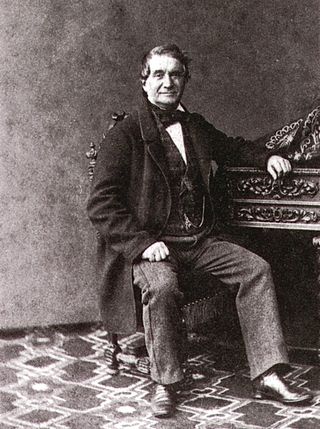
Cesare Pugni was an Italian composer of ballet music, a pianist and a violinist. In his early career he composed operas, symphonies, and various other forms of orchestral music. Pugni is most noted for the ballets he composed for Her Majesty's Theatre in London (1843–1850), and for the Imperial Theatres in St. Petersburg, Russia (1850–1870). The majority of his ballet music was composed for the works of the ballet master Jules Perrot, who mounted nearly every one of his ballets to scores by Pugni. In 1850 Perrot departed London for Russia, having accepted the position of Premier maître de ballet of the St. Petersburg Imperial Theatres at the behest of Carlotta Grisi, who was engaged as Prima ballerina. Cesare Pugni followed Perrot and Grisi to Russia, and remained in the imperial capital even after Grisi's departure in 1853 and Perrot's departure in 1858. Pugni went on to compose for Perrot's successors Arthur Saint-Léon and Marius Petipa, serving as the Imperial Theatre's official composer of ballet music until his death in 1870. He was also the grandfather of Russian painter Ivan Puni, also known as Iwan Puni and Jean Pougny.
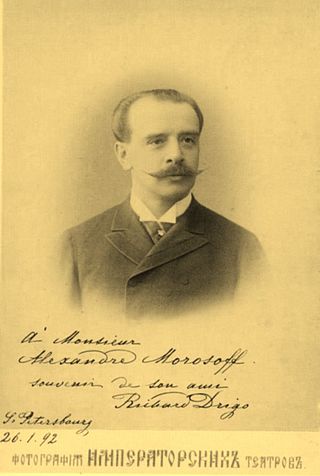
Riccardo Eugenio Drigo was an Italian composer of ballet music and Italian opera, a theatrical conductor, and a pianist.
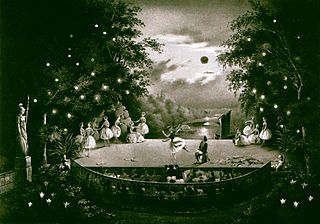
Ondine, ou La naïade is a ballet in three acts and six scenes with choreography by Jules Perrot, music by Cesare Pugni, and a libretto inspired by the novel Undine by Friedrich de la Motte Fouqué. Pugni dedicated his score to Augusta, Duchess of Cambridge, a long-time balletomane and patron of the arts in London. Whilst the original London production used the title Ondine, ou La naïade, Perrot staged a revival of the ballet under the title, La naïade et le pêcheur, a title which was used for all subsequent productions of the ballet.
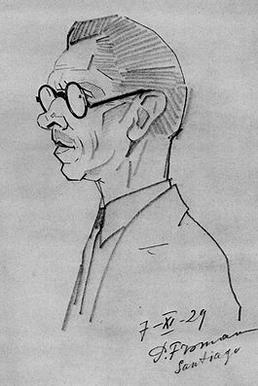
The Sergeyev Collection is an assemblage of materials that document the repertory of the Imperial Ballet of St. Petersburg as it existed at the turn-of-the 20th century. The collection consists primarily of choreographic notation and music for many of the notated works. Also included are designs for stage décor and costumes, photos, and theatre programmes for performances of the Imperial Ballet at the turn-of-the 20th century. The choreographic notations of the Sergeyev Collection record—in varying degrees of detail—the original works and revivals of the choreographer Marius Petipa, who served as Premier Maître de ballet of the St. Petersburg Imperial Theatres from 1871 until 1903. Also included is notation for choreography by Lev Ivanov, who served as Second Maître de ballet of the St. Petersburg Imperial Theatres from 1885 until his death in 1901. The dance sections of several operas are also among the notated choreographies of the Sergeyev Collection, the majority of which are the work of Petipa and Ivanov, respectively.
Lydia, the Swiss Milkmaid is a Demi-Caractère ballet in 2 acts, with choreography by Filippo Taglioni and music by Adalbert Gyrowetz.
The Parisian Market is a comic ballet in one act, with libretto and choreography by Marius Petipa and music by Cesare Pugni.
The Blue Dahlia is a ballet in two acts, with libretto and choreography by Marius Petipa and music by Cesare Pugni, first presented by the Imperial Ballet on May 12 [O.S. April 30] 1860 at the Imperial Bolshoi Kamenny Theatre in St. Petersburg, Russia, with Mariia Surovshchikova-Petipa and Timofei Stukolkin.

Catarina ou la Fille du bandit is a ballet in three acts and four scenes, with libretto and choreography by Jules Perrot and music by Cesare Pugni. The libretto is based on an incident in the life of the Italian painter Salvator Rosa. The work was first presented by the Ballet of Her Majesty's Theatre on 3 March 1846 in London, England, with Lucile Grahn, Louis-François Gosselin, and Jules Perrot.
The Two Stars or The Stars or The Two Little Stars is an Anacreontic ballet in 1 act, with choreography by Marius Petipa, and music by Cesare Pugni. Libretto by Marius Petipa, based on an ancient Greek myth.

La Vivandière is a ballet in one act with choreography by Arthur Saint-Léon and Fanny Cerrito, and music by Cesare Pugni.
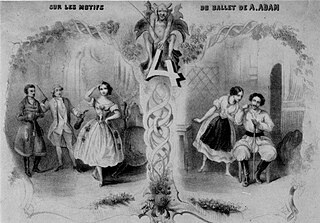
Le Diable à quatre is a ballet in two acts and three scenes, with choreography by Joseph Mazilier, music by Adolphe Adam, and libretto by Adolphe de Leuven, first presented by the Ballet of the Académie Royale de Musique on 11 August 1845, with Carlotta Grisi and Lucien Petipa.

The King's Command is a ballet in 4 Acts-6 Scenes, with choreography by Marius Petipa and music composed by Albert Vizentini.
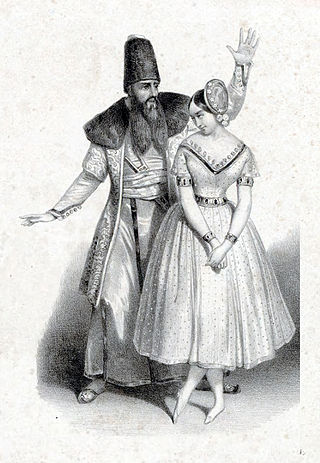
Le Diable amoureux is a ballet-pantomime in three acts and eight scenes, originally choreographed by Joseph Mazilier to the music of Napoléon Henri Reber and François Benoist. The libretto by Jules-Henri Vernoy de Saint-Georges is based on Jacques Cazotte's 1772 occult romance The Devil in Love. The work was first presented by the Ballet of the Royal Academy of Music in Paris on 23 September 1840, with Pauline Leroux, Mazilier, and Louise Fitz-James.

Ludwig Minkus, also known as Léon Fyodorovich Minkus, was an Austrian composer of ballet music, a violinist and teacher of music.
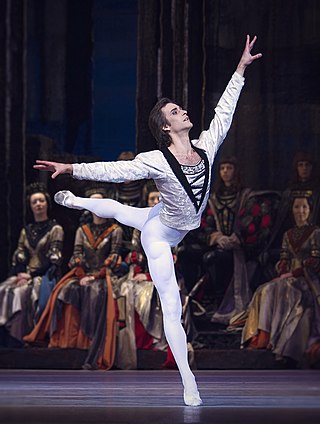
Ruslan Vasilyevich Skvortsov is a Russian principal dancer of the Bolshoi Ballet.
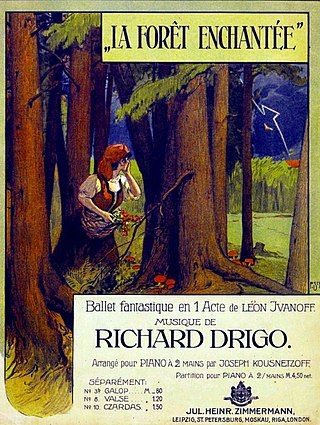
La Forêt enchantée is a ballet fantastique in one act, originally choreographed by Lev Ivanov to the music of Riccardo Drigo, first presented by students of the Imperial Ballet School in St. Petersburg, Russia, at the school's theatre on 5 April [O.S. 24 March] 1887.

Anastasia Stashkevich is a Russian principal dancer with the Bolshoi Ballet.














